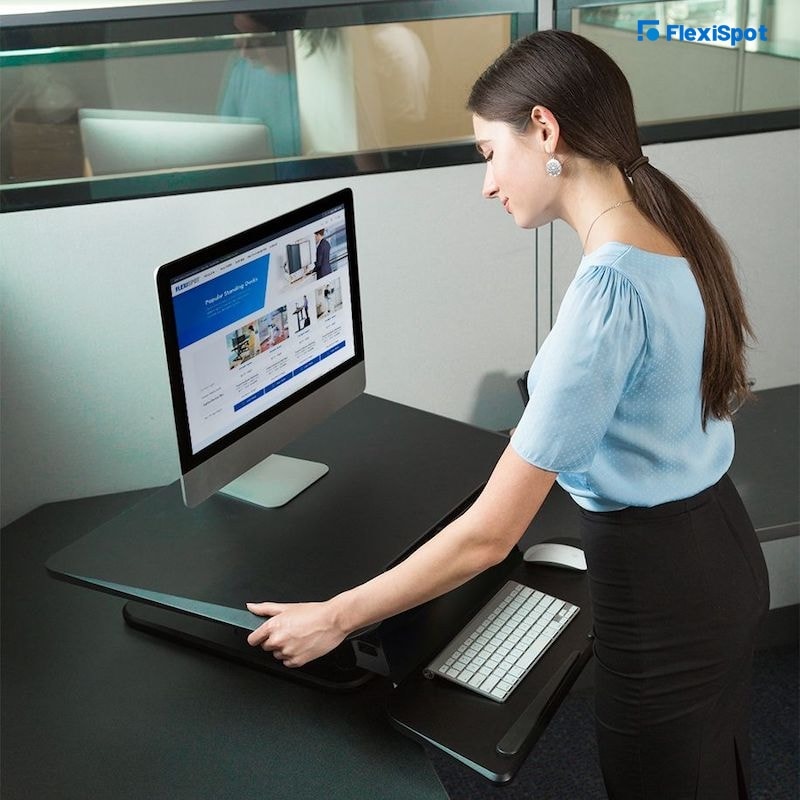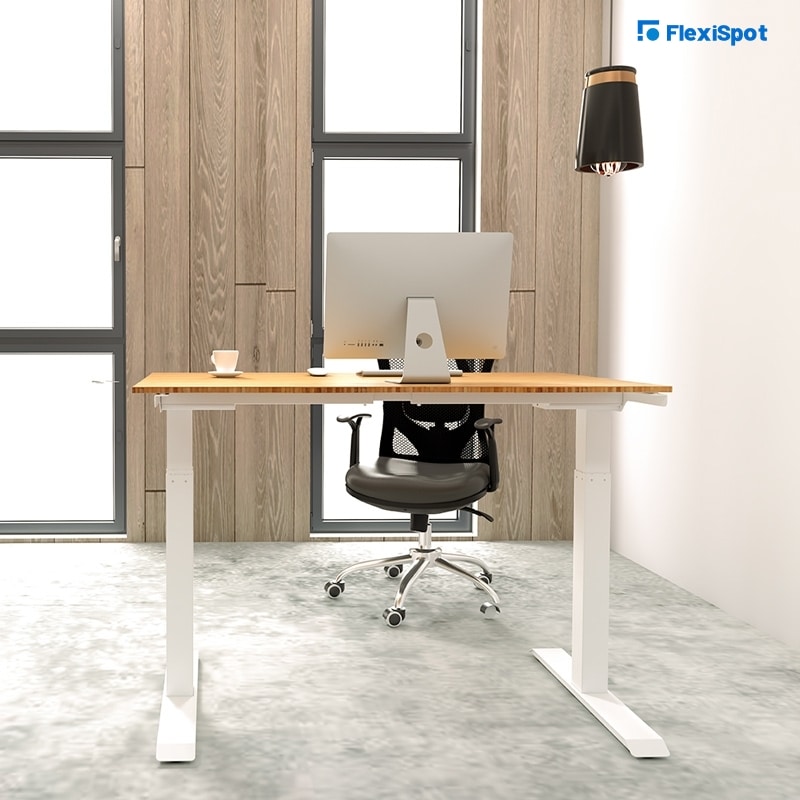Any kind of organizational change becomes a lot more effective when management gets involved. In fact, without the support of management, there are very few organizational changes that are able to be successful.
The support of management, no matter what kind of change you’re trying to incorporate into the workspace, is vital. This is especially true when the office is taking off on its journey towards ergonomic health because good ergonomic practices require effort on the part of all employees.
When employees are used to doing things a certain way, it becomes difficult to encourage them to make a change, but it isn’t impossible! It is easy for management to get involved and promote ergonomic health in a way that makes it easier for employees to follow and incorporate into their daily life.
How Management Can Support Health Ergonomic Practices
So, how can you promote ergonomics? There is only so much you can do to make sure employees are sitting a certain way or taking breaks a certain way. If you push too much, you may even come across as overbearing and have the opposite effect!
To promote ergonomics, you’d have to do it in a way that makes employees want to follow and feel like they are being cared for.
Support Taking Breaks
Many workplaces have hours on end dedicated to work, with very little time allotted for breaks – if at all! The one hour employees get for lunch is not enough to account for all the time they spend sitting at their desks, but many places will have this one hour as the only time allowed for breaks.
Of course, you can’t encourage too many breaks either, because that may start compromising the quality of the work. But small breaks throughout the day can make a significant impact on employees’ well-being. Even something as simple as just walking around the office or changing the seating position can get rid of some of the brain fog.
The important part here is to take breaks consistently throughout the day. Since many employees spend most of the day sitting, they should feel comfortable enough to take breaks when they need them so that the sedentary lifestyle doesn’t affect them negatively. A culture around taking these necessary breaks will help promote good health and employee engagement while also improving their productivity levels.
Encouraging Conversation Around Ergonomics
A major concern in many organizations is that when employees are going through any kind of ache or pain, they do not feel comfortable enough to bring it up to their managers.
By encouraging conversation around the topic and making sure employees know that their concerns are given priority, managers are able to gauge the level of employee comfort and make efforts to fix any issues.
In fact, having conversations about workplace ergonomics can help with identifying the symptoms of any health concerns before it becomes serious. Intervening earlier can also help prevent any new symptoms from developing for other employees as well, and keep everyone else in the workspace safe.
If an employee voices concerns about the chairs or desks that are being used, management can look into all the other furniture to make sure there are no issues.
Providing Training
Even though it is such a major concern, workplace ergonomics aren’t actually common knowledge, and most people don’t know how to follow good ergonomic practices. Many employees will simply opt for what feels right, even if it has a negative impact in the long run.
That’s why providing training for workplace ergonomics becomes necessary. Rather than simply telling employees to take care of their health, it is better to show them exactly how and why it is important to manage workplace ergonomics. It is also beneficial to give them hands-on training with a professional so that they know what they are doing wrong and what the downsides could be.
Through these training sessions, employees will learn about all the risk factors associated with bad ergonomic practices and how to avoid such risks. They will also learn how to manage existing problems, if any, and get an evaluation of their existing ergonomic setup.
With this, employees get the support they need in building a workstation that follows basic ergonomic principles and the education they need to understand what needs to be fixed and how and why it is important.
Take a Look Around
While some would consider this micromanagement, it is always a good idea for management to go through the office themselves to take a look at things and see how they are set up.
Only by walking through the office do you get to notice any existing risks or potential areas of improvement. By taking a look around, you also get to see how your employees are sitting, what posture they’re in, the layout of their workstations, etc. If you feel that there are concerns, you can make an effort to fix them.
Sometimes, employees end up falling into bad ergonomic habits that they don’t even notice themselves. It is not easy to maintain an ideal posture or position for more than an hour at a time, so if you notice an employee sitting with a bad posture or position, you can point this out to them.
It always takes an outsider’s perspective to take note of risk factors before they cause damage.
By making such walkthroughs a recurring practice, employees will also recognize the importance the organization places on good ergonomics and are likely to take it more seriously.
Making Corrections Around the Workplace
It is inevitable that you’d find areas to improve after taking a look around the workplace.
This could be in terms of position, and you may have to remind employees that they should be maintaining good posture. Make sure you do so in a way that doesn’t come across as accusatory and that the employees know that the concern around ergonomics is just as much a concern around their health.
When employees feel cared for, they are more likely to take the effort you make seriously and thus take ergonomics seriously as well.
Other improvements could come in the form of furniture and equipment. For example, rather than using just laptops, it would help to use peripheral keyboards and mice to keep employees’ neck and wrist positions at a suitable one.
You may also need to make changes with regard to furniture. Not all furniture fits every kind of employee, and it is inevitable that your workforce would have a number of different kinds of people. This could mean different heights, statures, and body types – each with their own set of ergonomic needs.
Kana Bamboo Standing Desk as an Ergonomic Choice
Flexispot’s Kana Bamboo Standing Desk is designed with workplace ergonomics in mind. It is a uniquely designed standing desk that makes your workplace look visually aesthetic while also taking care of your health needs.
The natural bamboo desk top has twice the durability of natural wood, and the lacquer coating helps you avoid stains and scratches, as well as insects, so you can work in peace without worrying about damage.
Being a standing desk, it also keeps employees’ health in mind, by allowing them to work while sitting or while standing. This encourages the habit of taking breaks as well.
The adjustable height also allows people with different body types and heights to set the desk in a position that works for them. This way, their neck, head, and wrist position don’t get compromised – all with one desk!
It comes with a powerful dual-motor lifting system that can make it easier for you to adjust the height whenever you need to. The enhanced structure also ensures stability at every capacity.
The desk also comes with an anti-collision feature that detects when an object is in the way so you can avoid any damage while adjusting the height. There is also a lock on the desk settings so that accidental touches don’t end up messing with the height of the desk.
The desk also comes with a cable tray to hide cables below the desk and keep your workstation looking clean and organized. It also has a socket outlet with 2 USB portals that provide a power source at any point in time. This way, the workstation looks neat and tidy while taking care of all the requirements of a work desk.
Incorporating the Kana Bamboo desk into your workspace will make sure that your health is safe with its ergonomic features and ensure your workspace looks visually appealing as well.
Safety and ergonomics play a very significant role in the success of any task at the workplace. While incorporating these can be a challenge for management, a good safety culture makes sure that employee morale, retention, and productivity remain high.
By making a bit of effort towards ergonomics, management can make sure employees give it just as much importance and thus ensure a workplace culture that promotes ergonomics.







